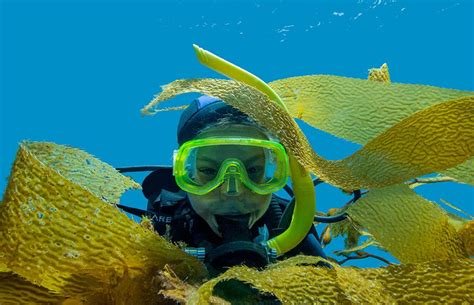Exploring the Wonders of Underwater World: Scuba Diving and Snorkeling Adventures
Have you ever dreamed of exploring the unknown depths of the ocean? The underwater world is a mesmerizing and mysterious place, filled with vibrant marine life, hidden caves, and ancient shipwrecks waiting to be discovered. In this blog post, we will delve into the thrilling adventures of scuba diving and snorkeling, and uncover the wonders that await beneath the surface. From selecting the right gear for scuba diving to mastering snorkeling techniques for beginners, we will guide you through the essentials of underwater exploration. Join us as we take a closer look at the mesmerizing rainbow of marine life, the importance of underwater ecosystems and conservation, and the exhilarating experience of capturing underwater memories through photography. Whether you are navigating underwater with basic dive signals and communication or adapting to the effects of pressure with equalizing and breathing techniques, this post will prepare you for an unforgettable journey into the depths of the sea. Get ready to embark on a series of adventures as we explore exotic dive destinations and the breathtaking beauty that lies beneath the waves.
The Thrill of Exploring the Underwater World
There is nothing quite like the thrill of exploring the underwater world. From the moment you dip below the surface, you are greeted by a whole new world teeming with marine life and hidden wonders. Whether you are a seasoned diver or a novice snorkeler, the underwater world holds an undeniable attraction that keeps adventurers coming back for more.
As you descend into the depths, you are greeted by a plethora of colors and textures that are unlike anything you have ever seen before. The sight of coral reefs, seagrass meadows, and enigmatic caves is enough to take your breath away, and that’s even before you encounter the magnificent creatures that call these habitats home.
With each dive and exploration, you have the opportunity to witness the interaction of fish, sharks, whales, and other marine life, offering a glimpse into the complex and fascinating underwater ecosystem. It is a privilege to be able to immerse yourself in such beauty and magic, and every expedition brings with it a renewed sense of wonder.
So, whether you are a recreational diver or a professional photographer, the thrill of exploring the underwater world is a captivating and enriching experience that will leave you spellbound at every turn.
Choosing the Right Gear for Scuba Diving
When it comes to scuba diving, having the right gear is essential for a safe and enjoyable experience. From the mask that allows you to see clearly underwater to the regulator that helps you breathe, each piece of equipment plays a crucial role in your dive. It’s important to invest in high-quality gear that fits properly and is well-maintained.
One of the most important pieces of gear for scuba diving is the BCD (buoyancy control device). This inflatable vest allows divers to control their buoyancy and stay at a comfortable depth. It’s important to choose a BCD that fits well and is easy to use, as it can make a big difference in your comfort and safety underwater.
Another essential piece of equipment for scuba diving is the regulator, which allows divers to breathe underwater. It’s important to choose a high-quality regulator that is well-maintained and properly serviced. A good quality wetsuit is also essential for staying warm and protected from the elements while diving.
When it comes to choosing gear for scuba diving, it’s important to do your research and invest in high-quality equipment that fits well and is properly maintained. Whether you’re a beginner or an experienced diver, having the right gear can make a big difference in your comfort, safety, and enjoyment underwater.
Mastering Snorkeling Techniques for Beginners
Snorkeling is a popular activity for those looking to explore the underwater world without the extensive training and gear required for scuba diving. For beginners, mastering the right techniques is essential to ensure a safe and enjoyable experience.
One of the most important techniques for beginners to master is proper breathing. Breathing through a snorkel can take some getting used to, but it’s essential for staying relaxed and comfortable in the water. Remember to breathe slowly and deeply, and always keep the snorkel in your mouth.
In addition to breathing, it’s important to learn how to properly clear your snorkel if it becomes flooded with water. This can be done by exhaling forcefully through the snorkel to clear the water, or by lifting your head out of the water and removing the snorkel to drain it.
Another important technique for beginners to master is finning. Proper finning techniques can help conserve energy and make it easier to maneuver through the water. Keep your legs straight but not locked, and use your whole leg to kick from the hips, rather than just the knees.
Discovering a Rainbow of Marine Life
When diving into the depths of the ocean, one of the most awe-inspiring experiences is coming face to face with the vibrant and diverse marine life that inhabits these waters. From brightly colored tropical fish to graceful sea turtles and majestic manta rays, the underwater world is a treasure trove of beauty and wonder.
As you descend into the crystal-clear waters, you’ll be greeted by a kaleidoscope of colors as schools of fish dart in and out of the coral reefs, providing a breathtaking display of nature’s dazzling palette. The sight of vibrant coral formations teeming with life is a true testament to the incredible biodiversity found in the world’s oceans.
Exploring the underwater world allows us to witness firsthand the harmonious coexistence of different species, from tiny, intricate seahorses to massive, gentle whale sharks. Each encounter with these fascinating creatures leaves an indelible impression, reminding us of the incredible interconnectedness and resilience of marine life.
Whether you’re an experienced diver or a beginner, the opportunity to discover a rainbow of marine life is an unforgettable and humbling experience that inspires a deep reverence for the precious natural habitats that we must strive to protect and preserve.
Exploring Hidden Caves and Shipwrecks
Exploring hidden caves and shipwrecks is an exhilarating experience that offers a glimpse into a mysterious underwater world. The anticipation of uncovering hidden treasures and encountering marine life is what draws many divers to these unique dive sites.
As you descend into the depths, the darkness envelops you, and the only source of light is your diving torch. The thrill of navigating through narrow passageways and discovering forgotten shipwrecks is a feeling like no other.
For those with a passion for history, exploring shipwrecks can provide insight into the past, offering a tangible connection to maritime history. The remnants of these sunken vessels tell stories of adventure, tragedy, and survival, adding a layer of depth to the dive experience.
Whether you’re a seasoned diver or a beginner, the call of hidden caves and shipwrecks is irresistible. The allure of uncovering the unknown drives divers to explore these captivating underwater sites and create unforgettable memories.
Understanding Underwater Ecosystems and Conservation
Exploring the underwater world is an exhilarating experience, but it is important to understand the delicate ecosystems that exist beneath the surface. Underwater ecosystems are incredibly diverse and complex, ranging from coral reefs to kelp forests and everything in between. Each of these ecosystems is home to a wide variety of marine life, all of which are interconnected in delicate balance.
Conservation efforts play a crucial role in preserving these underwater ecosystems for future generations to enjoy. Pollution, overfishing, and climate change are all threats to the delicate balance of underwater ecosystems. By understanding the impact that human activity has on these ecosystems, we can work towards implementing sustainable practices to protect them.
One key aspect of underwater conservation is education. By raising awareness about the importance of protecting these ecosystems, we can inspire others to take action. Whether it’s participating in beach cleanups, supporting marine protected areas, or reducing plastic waste, every individual can contribute to the preservation of our underwater world.
Ultimately, by understanding the intricacies of underwater ecosystems and the importance of conservation, we can work towards ensuring that these breathtaking environments remain intact for generations to come.
Capturing Underwater Memories: Photography Tips
Exploring the beauty of the underwater world can leave you with some breathtaking memories. But capturing those moments on camera requires some special techniques and equipment. Whether you’re a beginner or a seasoned underwater photographer, there are a few tips that can help you take stunning photos in the depths of the ocean.
One of the most important aspects of underwater photography is understanding the natural light conditions. As you descend deeper into the water, the colors start to fade, and the natural light diminishes. This can affect the way your photos turn out. Using a strobe or flash can help illuminate your subjects and bring out the vibrant colors of the marine life.
Another crucial tip is to get close to your subjects without disturbing them. This not only ensures that you get a clear shot but also helps to avoid stirring up the sediment and affecting the visibility. Using a wide angle lens can help you capture the entire scene and add depth to your images, while macro lenses are perfect for close-up shots of small creatures and colorful corals.
Lastly, mastering the art of patience is key when it comes to underwater photography. Marine life can be unpredictable, and capturing the perfect shot may require waiting for the right moment. Understanding the behavior of the creatures you’re trying to photograph can help you anticipate their movements and get the perfect shot.
Navigating Underwater: Basic Dive Signals and Communication
When exploring the underwater world, it is essential to have a solid understanding of basic dive signals and communication. Underwater communication is vastly different from conversations on land, as sound travels four times faster in water than in air. This means that verbal communication is not practical, and instead, divers rely on a series of hand signals and gestures to convey messages to their dive buddies.
One of the most important dive signals is the OK sign, which is used to indicate that everything is going well. This is often paired with the question mark sign, which asks the dive buddy if they are okay. Additionally, the thumbs up signal is used to communicate a desire to ascend, while the thumbs down signal indicates a need to descend. These basic hand signals are crucial for ensuring safety and understanding the needs of each diver.
In addition to hand signals, divers also use various underwater communication devices, such as underwater writing slates and dive lights, to convey more detailed messages. These tools can be especially helpful in low visibility conditions, where hand signals may not be as easily seen. It’s essential for every diver to familiarize themselves with these basic dive signals and communication techniques to ensure a safe and enjoyable underwater experience.
By mastering basic dive signals and communication, divers can effectively navigate through the underwater environment, stay connected with their dive buddies, and enhance the overall diving experience. Whether exploring vibrant coral reefs or discovering fascinating marine life, clear communication is key to a successful and enjoyable dive. Understanding and practicing these essential skills is a fundamental part of becoming a competent and confident diver.
Adapting to the Effects of Pressure: Equalizing and Breathing Techniques
Equalizing and breathing techniques are essential skills to master for any scuba diver. When descending into the depths of the ocean, the pressure increases, which can cause discomfort or even injury if not managed properly. Here are some key tips to help you adapt to the effects of pressure while diving.
Equalizing is the process of balancing the pressure inside your ears with the pressure of the surrounding environment. This is crucial for preventing barotrauma, which is when the pressure imbalances cause damage to the ear. To equalize, pinch your nose and gently blow out through it. This will open up the Eustachian tubes and allow the pressure to equalize.
Proper breathing techniques are also important for managing the effects of pressure. Slow, deep breaths help to keep your lungs fully inflated and balanced, which can aid in equalizing. It’s important to remain calm and relaxed while diving, as stress and panic can lead to disrupted breathing patterns and difficulty equalizing.
It’s crucial for divers to practice these techniques regularly in order to become comfortable and proficient with them. By mastering equalizing and breathing methods, you’ll be able to adapt to the effects of pressure and enjoy a safe and comfortable diving experience.
Exploring Exotic Dive Destinations: Must-Visit Locations
When it comes to scuba diving, there are countless stunning dive destinations around the world that offer unique and unforgettable underwater experiences. From the crystal-clear waters of the Maldives to the vibrant coral reefs of the Great Barrier Reef, there are endless options for divers looking to explore exotic and diverse marine environments. Whether you’re a seasoned diver or just starting out, these must-visit locations are sure to take your underwater adventures to the next level.
One of the most sought-after dive destinations is the Galápagos Islands, known for their incredible biodiversity and the chance to dive with schools of hammerhead sharks, sea lions, and marine iguanas. Another must-visit location is Raja Ampat in Indonesia, home to the world’s most biodiverse marine life and stunning underwater landscapes. For those interested in exploring historical wrecks, Truk Lagoon in Micronesia offers a unique opportunity to dive among shipwrecks from World War II.
For divers who are looking for a truly unique experience, the underwater caves and cenotes of the Yucatán Peninsula in Mexico are a magical and mystical destination. The vibrant colors and otherworldly rock formations make this an unforgettable diving experience. Additionally, the remote and pristine waters of Cocos Island in Costa Rica offer the chance to dive with large schools of hammerhead sharks and other pelagic species in an untouched and protected marine environment.
Whether you’re interested in exploring vibrant coral reefs, encountering diverse marine life, or delving into the mysteries of underwater caves and shipwrecks, these must-visit dive destinations offer something for every type of diver. With so many incredible locations to choose from, the world truly is your oyster when it comes to exploring exotic dive destinations.
Frequently Asked Questions
What gear do I need for scuba diving?
Some essential gear for scuba diving includes a wetsuit, mask, snorkel, fins, regulator, buoyancy control device (BCD), dive computer, and weights.
How can beginners master snorkeling techniques?
Beginners can master snorkeling techniques by practicing proper breathing, using the right equipment, staying relaxed, and learning to clear a snorkel.
What are some basic dive signals and communication techniques?
Basic dive signals include hand signals for communication underwater, and using a dive slate for written communication. It’s important to establish clear signals with dive buddies before submerging.
How can I capture underwater memories with photography?
Capturing underwater memories with photography requires a waterproof camera, understanding natural lighting underwater, and practicing good buoyancy control to avoid damaging the marine environment.
What are some popular dive destinations to visit?
Some popular dive destinations include the Great Barrier Reef in Australia, the Maldives, the Red Sea, the Galapagos Islands, and Palau. Each location offers unique marine life and underwater topography to explore.
Why is understanding underwater ecosystems and conservation important for divers?
Understanding underwater ecosystems and conservation is important for divers to minimize their impact on the marine environment, protect endangered species, and promote sustainable diving practices for future generations.
How do I adapt to the effects of pressure while scuba diving?
Adapting to the effects of pressure while scuba diving involves equalizing the ears and sinuses to relieve discomfort, and practicing proper breathing techniques to conserve air and maintain buoyancy at different depths.






